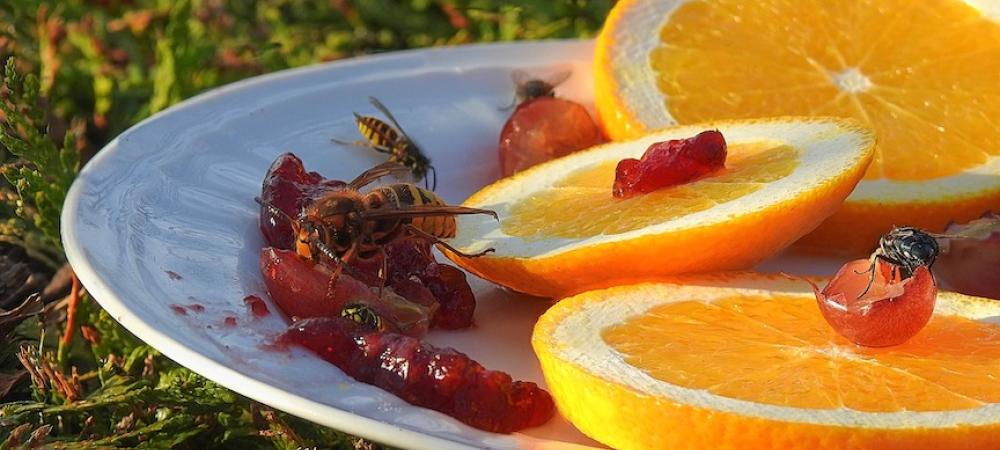How to Keep Wasps Away from Your Long Island Home

Summertime in Long Island is all about backyard barbecues, beach days, and relaxing in the sun. But nothing ruins a good time faster than an unexpected encounter with wasps. The peak season for wasp activity on Long Island runs from late spring to early fall. But these stinging insects are more than just a nuisance—they can be aggressive, especially if they feel their nest is threatened. If you want to keep wasps away from your home and yard, follow these practical prevention tips, and learn how to make an effective homemade wasp trap.
1. Understand the Types of Wasps on Long Island
Before diving into prevention, it’s important to understand the common wasps you might encounter on Long Island:
- Yellowjackets: Often nest in the ground or inside wall cavities. They are aggressive, especially in late summer and fall.
- Paper Wasps: Recognizable by their umbrella-shaped nests hanging under eaves or decks. Less aggressive but will sting if threatened.
- Hornets: Build large, round nests in trees or shrubs. They are the largest and most aggressive of the three.
Learn more about the most common types of wasps and bees on Long Island.
2. Seal Potential Entry Points
Wasps can find their way into your home through even the smallest cracks. To prevent wasps from entering your home:
- Inspect the outside of your house and look for any small openings, such as gaps or cracks in window frames, doors, siding, vents, or eaves.
- Replace any damaged screens and make sure to fill any holes using caulk.
- For added protection, cover vents and chimney openings with fine mesh.
3. Identify and Remove Nests Early
Wasps tend to build their nests in sheltered areas such as eaves, decks, sheds, and trees. Inspect your property in early spring when nests are small and easier to remove. If you spot a nest:
- Use a wasp spray at night when they are less active.
- Wear protective clothing and keep a safe distance.
- If the nest is large or in a hard-to-reach place, call a local pest control expert.
Wasps prefer to build their nests in sheltered areas. Regularly inspect eaves, sheds, and decks for early nest formations. If you spot a small nest, remove it in the early morning or late evening when wasps are less active.
4. Keep Food and Garbage Covered
Wasps are drawn to sugary drinks, protein-rich foods, and garbage. Reduce their attraction by:
- Keeping outdoor trash bins sealed with tight-fitting lids.
- Using trash bags with scent-blocking technology.
- Cleaning up food and drink spills immediately.
- Limiting outdoor sugary drinks, or use lids to prevent wasps from getting in.
- Covering foods when dining outdoors.
- Cleaning up fallen fruit from trees like apple or pear trees, common in Long Island backyards.
5. Use Wasp-Repelling Plants
Some plants have scents that are known to repel many types of insects, including wasps. Consider planting these around your patio or adding them to your Long Island garden:
- Peppermint
- Eucalyptus
- Spearmint
- Lemongrass
- Citronella
- Wormwood
- Basil
- Geraniums
- Marigolds
- Thyme
- Pennyroyal
These plants can help keep wasps away while also enhancing your landscape.
6. Avoid Wearing Strong Fragrances
Wasps are drawn to sweet smells. When spending time outdoors:
- Avoid wearing floral or fruity perfumes.
- Use unscented lotions and deodorants.
- Wear light-colored clothing, as dark or floral prints can attract wasps.
7. Make a DIY Homemade Wasp Trap
If wasps are still a problem, a homemade wasp trap is an easy and effective solution. Here’s how to make one:
Materials Needed:
- 1 empty plastic soda bottle (2-liter works best)
- Scissors or a utility knife
- 1 cup of sugar
- 1 cup of water
- ½ cup of apple cider vinegar
- A few drops of dish soap
- String (optional for hanging)
Instructions:
- Cut the Bottle: Using scissors or a utility knife, carefully cut the top third off the plastic bottle. This will create a funnel shape.
- Make the Bait: Mix sugar, water, apple cider vinegar, and dish soap in the bottom half of the bottle. The vinegar helps prevent catching bees while attracting wasps.
- Assemble the Trap: Turn the top portion of the bottle upside down and place it inside the bottom half, creating a funnel. Secure it with tape if necessary.
- Set the Trap: Place the trap in areas where wasps are most active, such as near patios or garbage bins. For best results, refresh the bait every few days.
You can also purchase commercial wasp traps at most local hardware stores.
8. Hang Decoy Nests
Wasps are territorial and tend to avoid areas where other wasps have already settled. Hanging a decoy nest in early spring can prevent new colonies from forming nearby.
9. Call a Professional for Wasp Control in Long Island
If you have a severe wasp infestation or a large nest near your home, it’s best to call a professional wasp control service. Attempting to remove a mature wasp nest on your own can be dangerous, especially if the nest is high up or inside your home’s structure.
At A&C Pest Management, we specialize in safe, effective, and eco-friendly wasp removal for Long Island homeowners. Our trained technicians can identify problem areas, remove nests, and implement preventative measures to keep wasps from returning. Contact our team to learn more!
Final Thoughts
By following these preventative steps and using DIY wasp traps, you can enjoy a wasp-free yard all summer long. If the problem persists, don’t hesitate to contact our professionals for help. Enjoy your Long Island summer without the buzz and sting of unwanted wasps!

